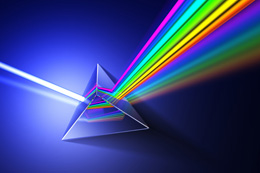Ultraviolet Light

The sun produces light along with other forms of radiation and heat. Fortunately much of the damaging radiation from the sun is absorbed by the atmosphere before it reaches the surface of the earth. UV light is invisible and it is not able to be felt, however it is able to cause substantial damage to skin cells. It does this by entering the nucleus of the cells that form the epidermis of the skin and strips out or damages essential parts of the DNA contained within the cell. This creates mutations in the genes so that when the damaged cell divides it produces an abnormal skin cell rather than a normal cellular clone. The damage to skin cells tends to accumulate over time, so that each episode of sun or UV exposure causes a small amount of extra damage which then accumulates. Eventually there is enough damage and genetic change to the skin cells that a skin cancer cell develops.
Compounding this slow accumulative damage is the periodic sunburn. When the skin is burnt by UV radiation there is significant cellular damage and even cellular destruction to the epidermis and dermis and the body sets in place a complex set of reactions to bring about a repair mechanism. This includes causing the skin to go red, which coincides with extra blood flow to bring the immune cells of defence and repair to the damaged sunburn site. The skin then starts to produce and distribute more pigment, known as melanin, as well as to stimulate cell growth and make the epidermis thicker, in an attempt to protect against further sunburns. Unfortunately the net result of a sunburn is damage and a higher risk of skin cancer. A tan does not convey any substantial protection, and the process of developing a tan and the increased risk of skin cancer far outweigh any perceived benefits of a tan. A tan, whether induced from the sun or a solarium, is the sign of skin damage and increased risk of skin cancer.
 UV light levels vary from the time of year, the time of day, your position in relation to the equator, and the prevailing weather. In general, there is more UV during the middle of the day during summer, which is higher the closer you are to the equator. There is less visible light during a cloudy day and there can be less UV, however, UV light will still penetrate clouds, just as visible light does, and at times the UV intensity is increased on a cloudy day due to scattering. Furthermore, there are often significant levels of UV during the winter months in Sydney. To prevent damage to your skin you need to ensure adequate protective measures all the time when outdoors. Further information about UV light as well as the UV forecast is available through the Australian Bureau of Meteorology http://www.bom.gov.au/uv/
UV light levels vary from the time of year, the time of day, your position in relation to the equator, and the prevailing weather. In general, there is more UV during the middle of the day during summer, which is higher the closer you are to the equator. There is less visible light during a cloudy day and there can be less UV, however, UV light will still penetrate clouds, just as visible light does, and at times the UV intensity is increased on a cloudy day due to scattering. Furthermore, there are often significant levels of UV during the winter months in Sydney. To prevent damage to your skin you need to ensure adequate protective measures all the time when outdoors. Further information about UV light as well as the UV forecast is available through the Australian Bureau of Meteorology http://www.bom.gov.au/uv/
Of course UV light is not all bad. It is essential for photosynthesis in plants and it is essential for the natural production of Vitamin D from our skin. Vitamin D is required for maintenance of strong bones, and other positive health benefits. So balance is important, however there are so many variables that affect Vitamin D production ranging from skin type, time of day and season, latitude, and areas of skin exposed that it is difficult to make broad recommendations for obtaining Vitamin D. In the USA, the Skin Cancer Foundation recommends obtaining Vitamin D from food sources such as Fish or foods that have been enriched with Vitamin D such as butter and milk and not to rely on the sun for Vitamin D production. In Australia, it is recommended to obtain some sunlight as part of your normal activities of daily living. It would be safe that you allow the skin of your arms and legs to be exposed for several minutes on most days, depending on your skin type, and this will help to provide adequate Vitamin D production. However it is essential that you do not allow your skin to be burnt, and it is best to maintain strict sun protection measures for your face at all times which is the most vulnerable part of the body for skin cancer.
What is Your Skin Cancer Risk?
Calculate your level of risk of developing a skin cancer from exposure to the sun.

